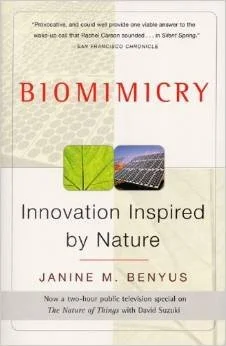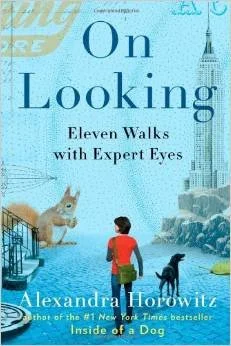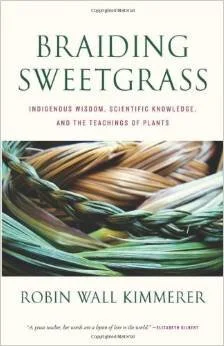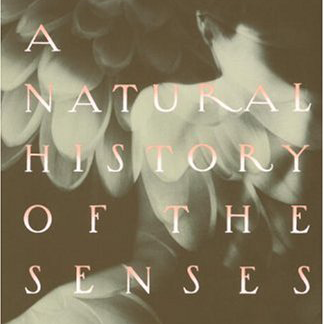In between Landsnorkeling expeditions, check out these books!
The Faraway Nearby
by Rebecca Solnit
This personal, lyrical narrative about storytelling and empathy from award winner Rebecca Solnit is a fitting companion to her beloved A Field Guide for Getting Lost. In this exquisitely written new book by the author of A Paradise Built in Hell, Rebecca Solnit explores the ways we make our lives out of stories, and how we are connected by empathy, by narrative, by imagination. In the course of unpacking some of her own stories — of her mother and her decline from memory loss, of a trip to Iceland, of an illness — Solnit revisits fairytales and entertains other stories: about arctic explorers, Che Guevara among the leper colonies, and Mary Shelley's Dr. Frankenstein, about warmth and coldness, pain and kindness, decay and transformation, making art and making self. Woven together, these stories create a map which charts the boundaries and territories of storytelling, reframing who each of us is and how we might tell our story.
The Evolution of Calpurnia Tate
From Amazon.com
Calpurnia Virginia Tate is eleven years old in 1899 when she wonders why the yellow grasshoppers in her Texas backyard are so much bigger than the green ones.With a little help from her notoriously cantankerous grandfather, an avid naturalist, she figures out that the green grasshoppers are easier to see against the yellow grass, so they are eaten before they can get any larger. As Callie explores the natural world around her, she develops a close relationship with her grandfather, navigates the dangers of living with six brothers, and comes up against just what it means to be a girl at the turn of the century.
Biomimicry: Innovation Inspired by Nature
This profound and accessible book details how science is studying nature’s best ideas to solve our toughest 21st-century problems. If chaos theory transformed our view of the universe, biomimicry is transforming our life on Earth. Biomimicry is innovation inspired by nature – taking advantage of evolution’s 3.8 billion years of R&D since the first bacteria. Biomimics study nature’s best ideas: photosynthesis, brain power, and shells – and adapt them for human use. They are revolutionising how we invent, compute, heal ourselves, harness energy, repair the environment, and feed the world.
Blessed Unrest
How the Largest Movement in the World Came into Being and Why No One Saw It Coming. One of the world’s most influential environmentalists reveals a worldwide grassroots movement of hope and humanity.
The Triumph of Seeds
We live in a world of seeds. From our morning coffee to the cotton in our clothes, seeds support diets, economies, lifestyles, and civilizations around the globe. In The Triumph of Seeds, award-winning author and biologist Thor Hanson explores both the natural and cultural history of seeds - why they are so dominant in nature, and why we are so utterly dependent upon them. Spanning locations ranging from the Raccoon Shack—Hanson’s backyard writing hideout-cum-laboratory—to the rainforests of Costa Rica and Nicaragua, from our flower patches and backyard gardens to the spice routes of Kerala, The Triumph of the Seeds is a book of knowledge, adventure, and wonder. Essential reading for anyone who loves who loves plants, or who may have wondered how the chili got its spice, what puts the buzz in coffee, or how seeds have influenced everything from the voyages of Christopher Columbus to the Industrial Revolution to the shape of the human face.
A World In One Cubic Foot
By David Liittschwager
From Amazon: Twelve inches by twelve inches by twelve inches, the cubic foot is a relatively tiny unit of measure compared to the whole world. With every step, we disturb and move through cubic foot after cubic foot. But behold the cubic foot in nature—from coral reefs to cloud forests to tidal pools—even in that finite space you can see the multitude of creatures that make up a vibrant ecosystem.
On Looking: Eleven Walks with Expert Eyes
From Amazon: Alexandra Horowitz’s brilliant On Looking: Eleven Walks with Expert Eyes shows us how to see the spectacle of the ordinary—to practice, as Sir Arthur Conan Doyle put it, “the observation of trifles.” On Looking is structured around a series of eleven walks the author takes, mostly in her Manhattan neighborhood, with experts on a diverse range of subjects, including an urban sociologist, the well-known artist Maira Kalman, a geologist, a physician, and a sound designer. She also walks with a child and a dog to see the world as they perceive it. What they see, how they see it, and why most of us do not see the same things reveal the startling power of human attention and the cognitive aspects of what it means to be an expert observer.
Braiding Sweetgrass
As a botanist and professor of plant ecology, Robin Wall Kimmerer has spent a career learning how to ask questions of nature using the tools of science. As a Potawatomi woman, she learned from elders, family, and history that the Potawatomi, as well as a majority of other cultures indigenous to this land, consider plants and animals to be our oldest teachers. In Braiding Sweetgrass, Kimmerer brings these two lenses of knowing together to reveal what it means to see humans as “the younger brothers of creation.” As she explores these themes she circles toward a central argument: the awakening of a wider ecological consciousness requires the acknowledgement and celebration of our reciprocal relationship with the world. Once we begin to listen for the languages of other beings, we can begin to understand the innumerable life-giving gifts the world provides us and learn to offer our thanks, our care, and our own gifts in return.
Mark of the Grizzly: Revised and Updated with More Stories of Recent Bear Attacks and the Hard Lessons Learned
By Scott McMillion “Mark of the Grizzly” outlines what can happen when people run into grizzlies on the bear’s turf, which can happen in lots of places scattered from Yellowstone National Park to Alaska. But the book also examines why encounters happen and the aftermath for the survivors, and it outlines how to behave in grizzly country to keep both humans and the great bears alive.
Last Child in the Woods: Saving Our Children From Nature-Deficit Disorder
By Richard Louv
From Publishers Weekly: Gathering thoughts from parents, teachers, researchers, environmentalists and other concerned parties, Louv argues for a return to an awareness of and appreciation for the natural world. Not only can nature teach kids science and nurture their creativity, he says, nature needs its children: where else will its future stewards come from? Louv's book is a call to action, full of warnings—but also full of ideas for change.
On the Origin of the Species - Illustrated Edition
By Charles Darwin, Edited by David Quammen
From Amazon.com: Darwin’s classic is fully and handsomely illustrated with more than 350 illustrations and photos, many of them in brilliant color. Reproductions from Darwin’s The Voyage of the Beagle, his journal of the travels that led to his remarkable breakthrough, appear throughout, inviting readers to experience Darwin’s journey and to understand how he developed his theory of evolution. In addition, brief excerpts from his letters, diaries, and correspondence bring both Darwin the man and his revolutionary discovery to life.
A Natural History of the Senses
By Diane Ackerman
From Amazon.com: "One of the real tests of writers," notes Ackerman in this liveliest of nature books, "is how well they write about smells. If they can't describe the scent of sanctity in a church, can you trust them to describe the suburbs of the heart?" Ackerman passes the test, writing with ease and fluency about the five senses. Did you know that bat guano smells like stale Wheat Thins? That Bach's music can quell anger around the world? That the leaves that shimmer so beautifully in fall have "no adaptive purpose"? Ackerman does, and she guides us through questions of sensation with an eye for the amusingly arcane reference and just the right phrase.
Endless Forms Most Beautiful
By Sean B. Carroll
From Amazon.com: "Every animal form is the product of two processes--development from an egg and evolution from its ancestors," writes Sean B. Carroll in his introduction to Endless Forms Most Beautiful. The new science of "evo devo"--or evolutionary developmental biology--examines the relationships between those two processes, embryonic development and evolutionary changes, despite their radically different time scales. Carroll first offers a recap of how genes express themselves in a growing embryo, then peers into the life histories of real-life examples to explain how those genes have changed (or not changed) over millions of years of evolution. Paraphrasing Thomas Huxley, he asks us to consider evolution and development as two sides of the same coin.
The Invisible Embrace – Beauty
By John O’Donohue
From Amazon.com: In this eagerly awaited follow-up to his international bestsellers ANAM CARA and ETERNAL ECHOES, John O'Donohue turns his attention to the subject of beauty - the divine beauty that calls the imagination and awakens all that is noble in the human heart. In these uncertain times of global conflict and crisis, we are riven with anxiety; our trust in the future has lost its innocence, for we know now that anything can happen from one second to the next. In such an unsheltered world, it may sound naive to suggest that this might be the moment to invoke and awaken beauty, yet this is exactly the claim that this book seeks to explore. DIVINE BEAUTY is a gentle but urgent call to awaken. O'Donohue opens our eyes, hearts and minds to the wonder of our own relationship with beauty.
The View from the Center of the Universe
By Joel R. Primack and Nancy Ellen Abrams From Scientific American: In this thoughtful and original book, a husband-and-wife team presents a science-based cosmology aimed at allowing us to understand the universe as a whole and our place in it. "Most of us have grown up thinking that there is no basis for our feeling central or even important to the cosmos," they write. "But with the new evidence it turns out that this perspective is nothing but a prejudice. There is no geographic center to an expand-ing universe, but we are cent-ral in several unexpected ways that derive directly from physics and cosmology." Primack is professor of cosmology at the University of California, Santa Cruz, and an originator of the theory of cold dark matter; Abrams is a lawyer and a writer.
The Spell of the Sensuous:
Perception and Language in a More-Than-Human World
By David Abram From Amazon.com: In writing The Spell of the Sensuous, Abram consulted an engaging collection of peoples and works. He uses aboriginal song lines, stories from the Koyukon people of northwestern Alaska, the philosophy of phenomenology, and the speeches of Socrates to paint a poetic landscape that explains how we became separated from the earth in the first place. With minimal environmental doomsaying, Abram discusses how we can begin to recover a sustainable relationship with the earth and the nonhuman beings who live among us--in the more-than-human world. -Kathryn True
Becoming Animal
By David Abram From Amazon.com: David Abram is unique among interpreters of the wild voice within us. His first book, The Spell of the Sensuous, has become a touchstone for a needed shift in our thinking about the place of humans in the world. As the poet Gary Snyder remarked, that book helped map us back into the world. In his new book, Becoming Animal, Abram offers a startling new exploration of our entanglement with the rest of nature. This time, his focus is the intimate but sadly forgotten relationship between our bodies and the earth. By excavating the most ordinary and familiar of our experiences--the perception of shadow, the recognition of depth, the transience of mood--he re-opens for us the knowing that our bodies are intertwined with the flesh of the earth. I cannot imagine another book that so gently and so persuasively alters how we look at ourselves, and reminds us that sentience was never our private possession, that our very awareness is a means of participating in a more than human world. At no other time in Western history have we needed to listen to the wild voice within us, and to Dave Abram's, as much as we do today. - Richard Louv
Pilgrim at Tinker Creek
By Annie Dillard From Amazon.com: This book is a series of essays that combines scientific observation, philosophy, daily thoughts, and deeper introspection with glorious prose. On the surface, Annie Dillard is simply exploring a place called Tinker Creek and its inhabitants: "It's a good place to live; there's lots to think about." But as her observations range well beyond the landscape into worlds of esoteric fact and metaphysical insight, each paragraph becomes suffused with images and ideas. Whether she is quoting the Koran or Albert Einstein, describing the universe of an Eskimo shaman or the mating of luna moths, Annie Dillard offers up her own knowledge with reverence for her material and respect for her reader.
Adventures Among Ants
By Mark Moffett
From Amazon: Intrepid international explorer, biologist, and photographer Mark W. Moffett, "the Indiana Jones of entomology," takes us around the globe on a strange and colorful journey in search of the hidden world of ants. In tales from Nigeria, Indonesia, the Amazon, Australia, California, and elsewhere, Moffett recounts his entomological exploits and provides fascinating details on how ants live and how they dominate their ecosystems through strikingly human behaviors, yet at a different scale and a faster tempo. Moffett's spectacular close-up photographs shrink us down to size, so that we can observe ants in familiar roles; warriors, builders, big-game hunters, and slave owners. We find them creating marketplaces and assembly lines and dealing with issues we think of as uniquely human--including hygiene, recycling, and warfare. Adventures among Ants introduces some of the world's most awe-inspiring species and offers a startling new perspective on the limits of our own perception.
The Sacred Balance
By David Suzuki
From Amazon.com: In this extensively revised and enlarged edition of his best-selling book, David Suzuki reflects on the increasingly radical changes in nature and science — from global warming to the science behind mother/baby interactions — and examines what they mean for humankind’s place in the world. The book begins by presenting the concept of people as creatures of the Earth who depend on its gifts of air, water, soil, and sun energy. The author explains how people are genetically programmed to crave the company of other species, and how people suffer enormously when they fail to live in harmony with them. Suzuki analyzes those deep spiritual needs, rooted in nature, that are a crucial component of a loving world. Drawing on his own experiences and those of others who have put their beliefs into action, The Sacred Balance is a powerful, passionate book with concrete suggestions for creating an ecologically sustainable, satisfying, and fair future by rediscovering and addressing humanity’s basic needs.
Wolf Willow
By Wallace Stegner
From Amazon.com: Wallace Stegner weaves together fiction and nonfiction, history and impressions, childhood remembrance and adult reflections in this unusual portrait of his boyhood. Set in Cypress Hills in southern Saskatchewan, where Stegner's family homesteaded from 1914 to 1920, Wolf Willow brings to life both the pioneer community and the magnificent landscape that surrounds it. This Twentieth-Century Classics edition includes a new introductory essay by Page Stegner.
The Gift of Good Land
By Wendell Berry
From Amazon.com: In this collection of essays, continuing the argument begun with The Unsettling of America, Wendell Berry writes of the importance of good farming to a healthy culture. By health he means not the mere absence of disease, but the operation of a balanced, nondestructive way of life; his essays on the Amish people of Pennsylvania and Ohio offer a model. "An economy of waste," Berry writes, "is incompatible with a healthy environment"--an environment that operates in balance, within bounds. Arguing for the primacy of family-based, local economies, and for the exercise of intelligence, reverence, and community values, Berry crafts a prose idyll celebrating the pastoral existence.
Go Outside: Over 130 Activities for Outdoor Adventures
By Nancy Blakey (Tricycle Press, 2002)
From School Library Journal: Grade 4-6-Creative outdoor activities for urban and country dwellers are grouped by season. Each spread describes one project, listing all of the supplies and/or equipment needed and offering safety considerations and step-by-step instructions. Some spreads include "Explore More!" sections with additional ideas. Activities range from cooking to games to crafts and sports; adult assistance is recommended for a few of them. Numerous, large black-and-white photographs show youngsters participating in the fun and visuals of the projects. Adults and children looking for some different outdoor activities will find this book helpful. Janice C. Hayes, Middle Tennessee State University, Murfreesboro
Keeping a Nature Journal: Discover a Whole New Way of Seeing the World Around You
By Clare Walker Leslie and Charles E. Roth (Storey, 2003)
From Amazon.com: What makes KEEPING A NATURE JOURNAL so popular? It is inspiring and easy to use. Clare and co-author Charles "Chuck" E. Roth offer simple techniques to give first-time journal-keepers the confidence to go outside, observe the natural world, and sketch and write about what they see. At the same time, they motivate long-time journal-keepers to hone their powers of observation as they immerse themselves in the mysteries of the natural world. Clare and Chuck stress that the journal is a personal record of daily experience and the world around us. Nature's beauty can be observed everywhere, whether in the city, suburbs, or country.
Teaching Kids to Love the Earth
By Marina Lachecki, Joseph Passineau, Ann Linnea and Paul Treuer
This is a valuable resource for Earth-caring adults who want to share their experience of caring for the Earth with the children in their lives. -- The Bloomsbury Review
Meditations of Henry David Thoreau - A Light in the Woods
By Henry David Thoreau, compiled and edited by Chris Highland
From Amazon.com: When Henry David Thoreau died at the age of forty-four in 1862, he had written a forest of articles and essays that eventually earned him a reputation as a first-rate naturalist, conservationist, and social critic. His gravesite in Concord, Massachusetts, is a pilgrimage site for readers who still turn to Walden, A Week on the Concord and Merrimack Rivers, Maine Woods, "Civil Disobedience," and "Walking" for inspiration. Thoreau was a supreme articulator of America's conscience when the country was industrializing, facing battle over slavery, and developing its public education system. His thoughts are brook-clear and strangely prescient today.
Common Birds and Their Songs
By Lang Elliott and Marie Read.
Includes a 65 minute audio Compact Disc. From Amazon.com: This book-audio package provides a unique introduction to fifty of the most familiar birds of North America and the songs they sing. Each bird is described in vivid detail - its natural history, habitat, voice, range, and field marks - and illustrated in stunning color photographs. Range maps show where each species is found in different seasons. The audio CD features original high-quality field recordings of each bird's songs and calls, which are track-coded for easy access. Common Birds and Their Songs will be valuable to anyone interested in birds, from beginner to expert. It's the perfect gift for any birder - or anyone with a bird feeder.
Walking- A Journal: A book for your thoughts with quotations by Henry David Thoreau
Published by Applewood Books, Bedford MA
From Google.com: Thoreau's famous essay is the source of inspiration for the pages of this journal, with plenty of open space to record your inner journey as you walk or rest.
Soulcraft-Crossing into the Mysteries of Nature and Psyche
By Bill Plotkin
Amazon.com: "Here is an abundantly wise and carefully crafted survival guide for the wild soul currently dozing (or dying) at the heart of your civilized life. Plotkin has wandered again and again into the nourishing darkness, and has returned with this earthly bundle of insights and images — talismanic tools for awakening to the outrageous depths both within us and all around us. He has bound them into a book that is immensely practical, alive with ritual intelligence, thick with useful tools from a host of courageous comrades."— David Abram, author of The Spell of the Sensuous
The Sense of Wonder
By Rachel Carson
From Amazon.com: Not long before she died in 1964, the noted environmental writer Rachel Carson wrote an essay for Woman's Home Companion magazine called "Helping Your Child to Wonder." In that essay-reprinted here, with photographs of natural subjects by Nick Kelsh--Carson urged parents to take their children to wild places in order to introduce them to the astonishing variety of life that exists all around us: to study birds, listen to the winds, and observe the stars. Too much of the child's subsequent education, she warns, will be devoted to dimming that "clear-eyed vision, that true instinct for what is beautiful and awe-inspiring" with which children are born; it is the parent's task to be an adult guide who can in turn rediscover the "excitement and mystery of the world we live in." Carson's words are timely, and this beautifully illustrated edition makes a fine gift for new and prospective mothers and fathers. -Gregory McNamee
In Motion
By Tony Hiss. From Booklist: Hiss describes “deep travel” as an elevated awareness one can experience as one moves about, locally or globally. This book explores cognitive access to that aspired-to awareness, resulting in a work that resembles more an excursus into psychology than a concrete description of the travel experience. For example, Hiss writes prolix passages about the consciousness of the flow of time, positing improved perception of time as a way to higher acuity about one’s surroundings. In Hiss’ case, those are his home of New York City, in which most of his personal observations are set. For the wider world’s aid in defining the concept of deep travel, Hiss quotes extensively from notable travel authors ranging from Marco Polo to Paul Theroux. He eventually diverges into human evolution, taking this direction to show that wanderlust is innate to humans. A discursive and intentionally incomplete work—in one chapter, Hiss collects thoughts for a possible future title called A Short History of Awareness––this work will appeal to readers interested in the psychological aspects of travel. -Gilbert Taylor
The Species Seekers
By Richard Conniff
From Publishers Weekly: Until about 1834, the word "scientist" didn't exist. According to naturalist Conniff (Swimming with Piranhas at Feeding Time), it was likely at a meeting of the British Association for the Advancement of Science) where a member, following the model of "artist" and "atheist," coined a new term-"scientist" reflecting the transition of the nascent study of plants and animals from self-educated hobbyists to a new breed of professional. The author blows the fusty dust of centuries off an exhaustive bibliography of almost 300 books, many published in the 1800s. Conniff tells a fresh story that begins with Swedish botanist Carolus Linnaeus's creation of a species classification system in 1735, through Darwin's development of the theory of evolution--and of how, then as now, it was a challenge to religious orthodoxy--to the present as new species continue to be discovered, including in this decade a striped rabbit in the Mekong Delta. Conniff's parade of pioneers whose colorful exploits are recounted is at times overwhelming, but this history of the "great age of discovery" is spellbinding.
































